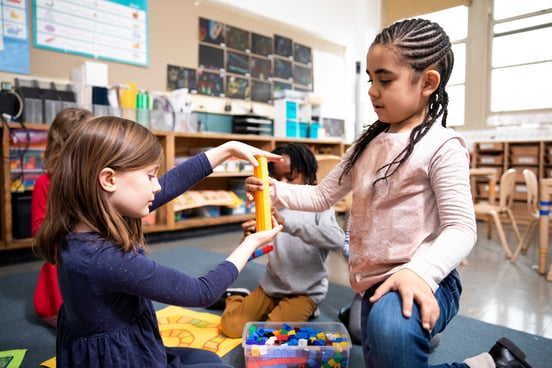
Math Assessment in California Schools: The Shift Toward Differentiated Instruction
Math assessment in California is changing. What used to be a compliance exercise or reporting tool is now becoming a...
ALI Staff | Published April 16, 2020
Self-directed learning isn’t a new concept.
It predates traditional education as a way to engage in your thinking and answer questions about the world.
Teachers can tap into this drive and curiosity by creating environments that boost cognitive thinking and giving students more ownership about what they learn and how they get there.
This can be euphoric for the teacher and rewarding for the students, but it has to be purposeful.
We’ve put together a guide to self-directed learning that includes how to tap into students’ potential and how to recognize when they’re ready to take their learning into their own hands.

Self-directed learning is an educational approach where students take control of their own learning.
From there, it can take on a few different forms.
It can be truly independent, student-led learning or teacher-directed learning with guidance on setting goals, managing tasks, or developing critical thinking skills.
What is a self-directed learner? A self-directed learner is an individual who is able to set goals and work to meet them in an independent way.
That’s the simple answer. These learners typically boast a few common characteristics that make it more likely they will thrive in an independent environment.
Self-directed learners are usually:
Teachers are an important piece in setting up environments where self-directed learning can happen successfully. Examples of self-directed learning in the classroom include:
Project-based learning
Research projects with hypotheses or topics chosen by students
Learning journals
Independent book clubs
Peer teaching and role-playing activities
Choice boards
Learning stations
Time for students to engage in passion projects
All of these self-directed learning examples still need teacher guidance and student buy-in to happen. To develop more cohesive self-directed learning in the classroom, teachers should:
Self-directed learning can’t happen overnight. It’s a challenging process that needs actionable steps taken by the educator to evolve into something more student-led.
That said, it also needs buy-in from the students. Let’s look at the four main steps of self-directed learning from the learner’s perspective.
Students don’t wander into educational environments ready to learn on their own.
They need the right attitude and the right skills to participate in self-directed learning.
At school, that can look like a genuine interest in the subject matter, organizational skills, and the ability to self-reflect and take in feedback from the teacher.
On their own, it can be more challenging.
Students need to consider their learning environments at home and whether they are self-disciplined enough to engage in independent study without ready feedback from their teacher.
Online tools can help students chart whether they’re making progress toward their goals.
Learning goals can come from the educator, but they’re much more powerful when the student is involved in goal-setting.
These can be benchmark goals around units of study, a timeline for completion of relevant tasks, or more structured daily goals.
It all depends on the learner and what they need to be successful. That requires quite a bit of self-reflection.
Self-directed students need to know enough about themselves to understand how they learn best.
In the classroom, teachers can guide students in activities about their learning styles.
For example, a student that identifies as a visual learner can tap into that when they meet a challenge in independent study.
Self-directed students also have strategies to move through self-directed learning in an effective way.
That doesn’t mean finishing tasks as quickly as possible.
It’s about working toward goals in a way that suggests a transfer of skills.
Students should be self-motivated to work through tasks that make sense to their big-picture goals.
Self-directed learning isn’t haphazard in any way.
For students to be successful, they have to reflect and assess their progress along the way.
A lack of progress doesn’t always mean there’s a problem with their learning.
It may mean that goals should be adjusted to where students actually are.
Self-reflection is a challenging skill to learn and get better at.
In the classroom, teachers should be available for regular feedback and engage with students around what they’re learning and how they’re learning.
This isn’t about cutting students loose but giving them the space to reflect on their learning gaps and successes.
Self-directed learning can help students develop skills in autonomy, critical thinking, and adaptability. It can help them feel empowered to take more ownership over their education and develop a lifelong love of learning.
As students become adults, those skills around goal-setting, resourcefulness, and decision-making will carry with them. It prepares them for real-world challenges that require resilience and adaptability.
It’s important to note here that not all students flourish in a self-directed environment.
Students need the time and space to figure that out, but some will come out on the other side with needs that can’t be addressed with self-directed learning.
An individualized approach in the classroom is always the best approach to meet students where they are at.

Math assessment in California is changing. What used to be a compliance exercise or reporting tool is now becoming a...

You know the moment: a student’s eyes light up when the science experiment fizzes or the math puzzle helps them...

STEM classrooms are full of different types of learners in the classroom, each with their own strengths and needs.
...